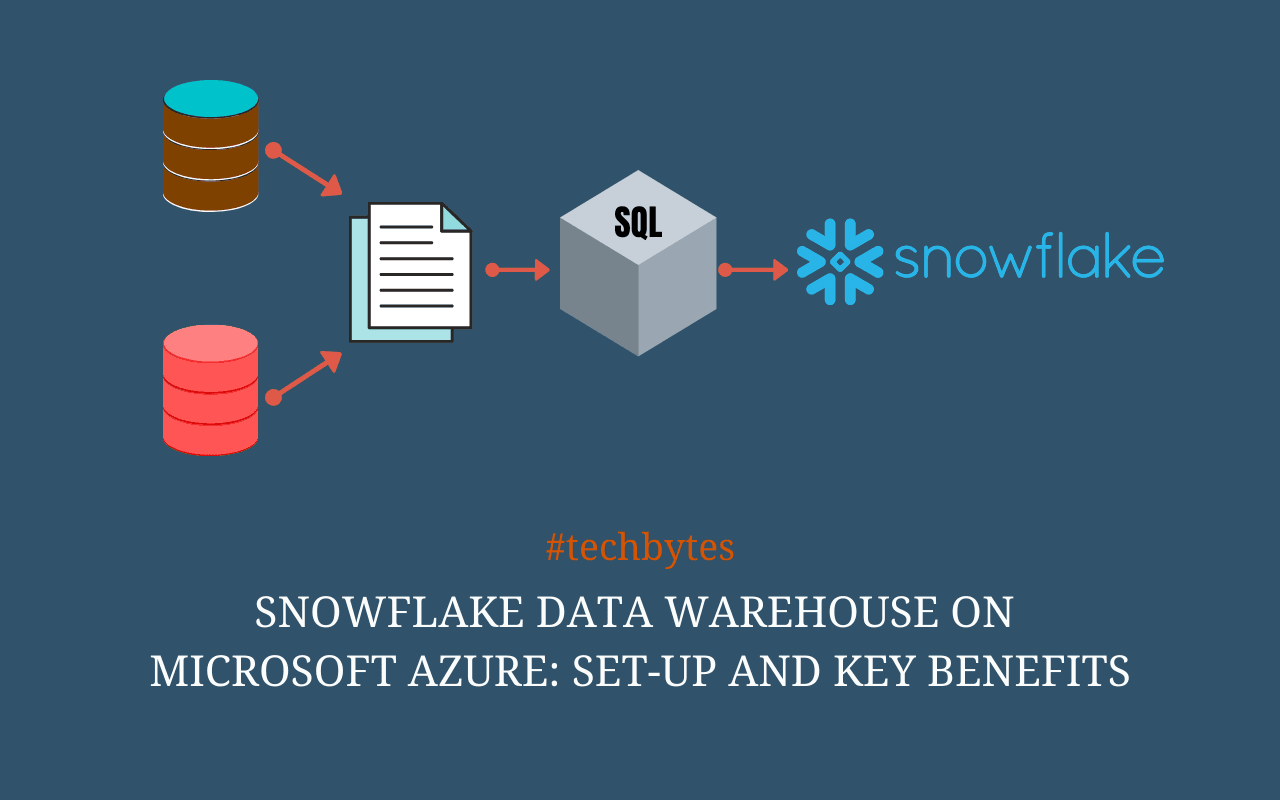
Demystifying Snowflake: The Biggest Software IPO in History – Techbytes
Just recently, Snowflake made history by debuting on the NYSE as the largest software company to IPO in the United States’ history. The data warehousing company went public and priced its shares at $120, which would later catapult up to $300 on its first trading day. This was another record broken by the data warehousing company as Snowflake became the largest company ever to double its value on its opening trading day. The company reached a market cap of almost $75 billion. Safe to say that Snowflake benefited a great deal from this move-over advantage.
Reasonably enough, the startling performance of Snowflake IPO is further evidence that the market is going bonkers. As a searing hot summer that sent Lemonade, BigCommerce, Vroom, and other IPOs spiraling seems to have transformed into yet another unseasonably balmy autumn. Otherwise, how else would anyone explain seeing an unprofitable company with 60 percent gross margins trade at about 75 times the revenue it could earn a year from its point of entry into the market?
Despite these rather remarkable multiples, there are reasons for optimism, especially when looking at markets such as Snowflake IPO. These IPOs are all explored in detail in longer reports of their respective companies forecasting their most likely trends.
Outlined below is detailed information about Snowflake and its current trends:
What Does Snowflake Do?
Historically, most company data are always stored on-premises. This means that companies must invest in physical servers to store their data that the parent company manages. Traditionally, incumbents like IBM and Oracle dominated this space as almost all businesses relied on their servers to store their data.
But Snowflake is fundamentally different as this data warehouse company helps small and medium-sized businesses to warehouse their data in the cloud. Moreover, Snowflake makes the stored data quarriable. Meaning Snowflake makes it easier for businesses and enterprises to pull insights from the data already stored.
Separating storage (where data is held) is considered one of Snowflake’s most important innovations. By offering this service before other tech giants like Microsoft, Amazon, and Google, Snowflake was able to attract more customers and reach a wider targeted audience. This strategy helped the company build what would become one of the biggest market shares in the data warehousing space.
Snowflake Has Favorable Market Dynamics.
Since it went public, Snowflake’s total addressable market value has become massive. As the company pegs its market at around $81 billion, some sources claim that it may be much larger than that. A study by the International Data Corporation calculated that global data storage generated over $88 billion in revenue in 2018 alone. And the current trends suggest that this figure should rise to around $176 billion by 2023. Of this, Snowflake was estimated to have generated about $13 billion in 2018.
For a data warehousing market, Snowflake is growing considerably fast and well as its market has been predicted to reach about $30 billion by 2025. As new software programs and devices increase the amount of data being generated, there’s even more demand for more sophisticated warehousing solutions. And Snowflake is one such data warehousing market that’s likely to increase and deliver on that.
On a more critical note, Snowflake’s market is fragmented. As such, market analysts and strategists estimate that Business Warehouse from SAP, the biggest player in the data collection space, will hold just around 15% of the market. Following closely should be Apache Hive with 11% and Snowflake at 10%. That itself is no mean feat.
However, this data warehousing market doesn’t necessarily need to topple the top players that hold majority shares to continue growing. Instead, Snowflake just needs to hold off any rivals that may pose a threat and pick off other smaller players. This way, Snowflake should have much more leeway to expand and grow its market by attracting even more customers.
Snowflake’s Shares Could Double from Current Levels.
The cloud company’s current shares could double if it performs well enough to outshine its rivals, said chief strategist at Baker Asset Management, King Lip. After raising about $3.4 billion in one of the largest-ever software IPOs, this data warehouse company exploded in its public-market debut. This managed to draw in one of the world’s legendary investors, Warren Buffet, which was another selling point itself.
The current enthusiasm for Snowflake’s listings also indicates the market’s risk appetite to always invest in companies offering their shares to the public for the first time. Their demand remains high despite their unpredictability in the market environment, says King Lip.
In theory, you realize that more customers prefer moving their businesses from on-premises to off-premises. And Snowflake seems to check almost all boxes that some very serious investors are interested in. This shows a lot of promise in terms of superior growth for the data warehouse company, data analytics, customer retention, client savings, and cloud storage.
Under the ticker, SNOW, the company sold over $28 million shares for $120 each on its debut, pricing its stock above the prior agreed range of between $75 and $85 amid strong investor demand. From the current trends, the only drawback is the company’s valuation. However, if Snowflake’s growth continues, we should expect the valuation to look cheaper at current levels.
Snowflake’s Stunning Growth.
As a new public company, you cannot deny that Snowflake has had one of the most remarkable IPO stories to date. Snowflake has executed one of the most flawless transitions into a public company since its inception, winning top-tier customers, scaling revenue, and expanding with them.
Over the last fiscal year, Snowflake’s revenue grew 173%, increasing from $96 million to $264 million. The data warehouse company logged $241 million in the last six months ending July 31st, 2020. That’s an annual run rate of $482 million, which represented an increase of over $132% from the same period in 2019.
Just as impressively, the tech company has also shown its ability to retain its customer base as net revenue in the last six months reached 158%. This indicates a significant increase in overall consumer spend of 58% during the same period of the year before. This marks the second-best net dollar retention for public SaaS companies, exceeding even that of Slootman’s old roost, ServiceNow (130%), Slack (138%), and Datadog (146%).
The company’s larger than planned $3.4 billion in market value would later reach $12.4 billion valuation, which it achieved in its most recent fundraising. Therefore, during the Snowflake IPO reading, nobody expected this cloud software industry to garner a market value more than three-quarters IBM’s size or six times Slack’s size, the work productivity business that listed in 2019.
Currently, Snowflake’s database spans several sectors as it boasts some really big names the likes of Nielsen, DoorDash, McKesson, Rent the Runway, Instacart, and Office Depot. As of now, the data warehouse company’s biggest customer is Capital One, which accounts for 11% of Snowflake’s revenue.
Snowflake Is Battling Giants.
With a fast-growing consumer base for its data warehousing services, Snowflake allows users to analyze their data across different remote storage providers like Amazon Web Services, another giant cloud service provider.
Competition provides even more reason for circumspection. It’s not unexpected to find Snowflake rubbing shoulders with some of the largest companies, including Microsoft, Google, and Amazon. After all, it operates in a fragmented market.
While Snowflake has greatly benefited from its first-mover advantage, it faces fierce competition from the Big Three cloud service providers, which are catching up, and fast. Amazon, Google, and Microsoft now provide equivalent platforms that customers can utilize besides Snowflake.
What makes matters worse for Snowflake is its reliance on these giant competitors for storing its customer data. To date, the data warehouse company has prospered by playing nice with the world’s largest companies. As a result, customers aren’t really restricted to using just one cloud service provider. And as even more cloud service companies crop up with even more complex “multi-cloud” offerings, neutrality is a tactic worth considering. But one that may not be possible in the coming years.
As of now, there aren’t any identifiable barriers to prevent the Big Three companies from muscling in on Snowflake’s market share. Moreover, given their funding and technical talent, it’s evident that Snowflake is in a very vulnerable position. To that end, it’s not unexpected for investors to want to keep a close eye on the company’s market share.
The Bottom Line
As of writing this, it’s evident that Snowflake has only just begun exploring its options as a public company. And from the looks of it, it’s evident that the company will make even more headway as investors get a better understanding of its staying power in the next six to twelve months.
Despite strong competitive pressures from even bigger names and companies in the industry, an excellent management team, exceptional track record, and favorable market dynamics should help Snowflake have a more stable and sustainable future. With the right strategies in place, Snowflake’s IPO should be more than just another flash in the pan for investors. This may be the next best generational business we’ve been waiting for.



